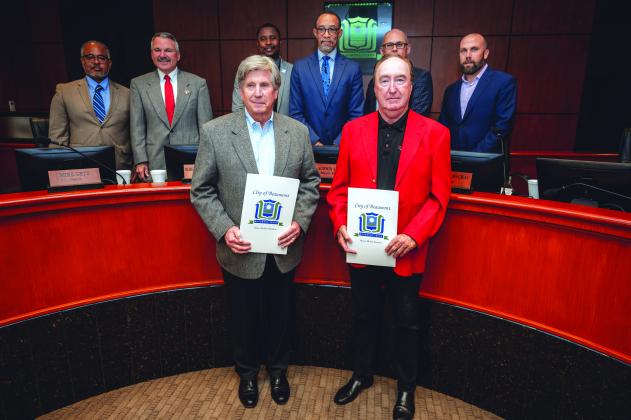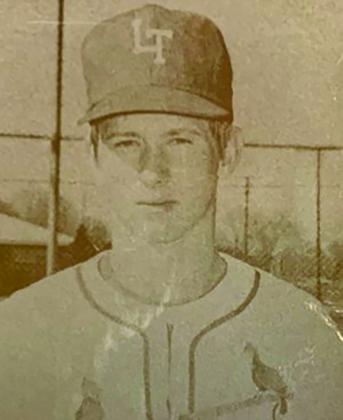The Lamar University baseball program has a robust history, which dates back to humble beginnings when the team was first commissioned in 1967. Three Lamar greats, Jim Gilligan, David Bernsen and Kevin Millar, who have already had their jerseys retired – No. 29, No. 25 and No. 15, respectively – will all attend an official celebration Saturday, May 7, at Vincent-Beck Stadium.
“In a program with such a rich history, it would be easy to retire a dozen numbers and we may eventually get to that,” said head coach Will Davis. “These three have done so much for this program both as players, coaches, and ambassadors in growing Lamar baseball, both during their playing days and after that. We felt this was a great three to start with.”
The on-field celebration will begin at 1:45 p.m., just before the Cardinals are set to play UT Rio Grande Valley at 2 p.m. Southeast Texans are invited to head out and enjoy the festivities, as well as the game, free of charge.
Gilligan is a true coaching legend and has walked the LU dugout, as both player and coach, for more than 40 years. A six-time conference coach of the year, Gilligan retired from the sport following the 2016 campaign, but his accomplishments on the field will be etched in the LU record books forever. During his tenure, Gilligan guided the team to more than 1,355 wins, a mark that ranks 13th all-time in NCAA history. In addition to the wins Gilligan also led the Cardinals to 12 conference titles, 12 NCAA Regional appearances, 30 30-win seasons, eight 40-win seasons and a program-best 54 win-campaign in 1981.
A member of the Texas Baseball Hall of Fame and the Southland Conference Hall of Honor, Gilligan is so loved by the Beaumont community that, in 2010, a stretch of Florida Avenue running adjacent to Vincent-Beck Stadium was charged to Jim Gilligan Way. When Gilligan retired, he did so as the program’s and Southland Conference’s all-time winningest coach.
“I am very honored to be a part of it,” said Gilligan. “The three of us together will be very special.”
Bernsen had a superb four-year career in baseball from 1969-72, but was especially magnificent in 1971 when he hurled LU to its first-ever Southland Conference baseball championship. That season, he won six games in nine starts, posted a 4-0 league record, led the SLC with a 1.89 ERA and tossed four shutouts, including a one-hit game against Baylor. He was picked to the All-Southland Conference Team and won the Johnny Sain Award as the league’s outstanding pitcher.
At the end of his collegiate career, he held Lamar records for wins, strikeouts, ERA, games started, complete games and shutouts for single season and career. After over 50 years, Bernsen still holds records at Lamar for career shutouts with six. His career ERA of 2.01 still stands today and is No. 1 for pitchers with three or more years and tied for first with four shutouts during a single season.
Bernsen was also elected as the Student Body President while at Lamar and, in 1994, became the first baseball player inducted into LU’s Hall of Honor, which recognizes athletes in all sports, and was later inducted into Lamar’s Baseball Hall of Fame. For his collegiate efforts, he was named to the Southland Conference 1970s All Decade Team. He remained an active Lamar University supporter, including two terms as President of the Hall of Honor.
After his time at Lamar, Bernsen was recognized as Citizen of the Year by the Neches River Festival and as a Distinguished Alumni of Lamar University.
He served the State of Texas by being appointed to the Texas Department of Transportation by Governor Ann Richards in 1991 and later became Chairman of TxDOT under both Governors Ann Richards and George Bush. In 1998, he was the first Lamar alumnus to be elected to the Texas State Senate and was honored with the naming of the David E. Bernsen Highway in Southeast Texas.
“It was a fulfillment of a little boys dream to play baseball,” said Bernsen, who started his baseball journey as an 8-year-old at West End Little League in 1958 – the league’s first year of existence. He also helped Forest Park High School reach the state championship in 1967.
“My first year at Lamar was 1969 and Gilligan was a graduate assistant coach at the time,” said Bernsen. “I learned more with him than any other coach. He has an innate baseball sense of mind. He always had strategy, but also had the heart for baseball, as well as the ability to inspire and develop players.”
Bernsen’s first college start came on the road against University of Southwest Louisiana, now known as University of Louisiana Lafayette, against Ron Guidry, who would go on to pitch for the New York Yankees. Bernsen got the win.
“David was ‘the player’ and the guy we wanted on the pitcher’s mound every day,” said Gilligan. “He was truly one of the best pitchers Lamar has ever had. We couldn’t have gone to a better place in the program as fast as we did without David. He had a good overhand fastball, four seam, and a tremendous 12-6 curveball that no one could hit and his earned run average reflected it. He always pitched against the best teams – a true No. 1 starter.
“He was a warrior on the mound. David had such composure and you can see why he went on to become so successful in all of his endeavors.”
Bernsen said he can remember specific pitches and plays, including his favorite pitch – the overhead 12-6 curveball, which he learned how to throw while playing whiffle ball.
“As a pitcher, you always have a very close relationship with your catchers – Jimmy Harris, Johnny May and the late David Breazeale.”
Bernsen said his first catcher and roommate at Lamar was Joe Augienelle, from New York City.
“I taught him how to drive in the parking lot of Brooks-Shivers on campus in a 3-speed Chevy Corvair that I bought for $150,” he said. “Baseball is unique. It’s a very mental sport with hand-eye coordination and strategy. It all comes together like music – with all the different positions working together. You can make a bad pitch and have your third baseman make a play to get an out. It pulls everyone together.”
“The lessons I learned on the baseball diamond at Lamar, I have taken with me through the various stages throughout my career, whether its politics or practicing law,” Bernsen added.
Millar was a two-year letterwinner for the Cardinals in 1992-93 and helped LU win the 1993 Sun Belt Conference regular-season and tournament championships, advancing to the NCAA Central Regional Championships.
In 1992, Millar led LU in runs scored (41), hits (56), home runs (13) and RBIs (50) to earn All-Sun Belt Conference honors. He also earned the Al Vincent Award, which is given annually to LU’s top hitter. As a senior in 1993, Millar hit .324 with 70 hits, 53 runs scored, a team-best 18 doubles, five home runs and 53 runs batted in.
“When I came back to Lamar in the early ’90s, I stopped to see a kid, who a friend of mine recommended,” said Gilligan. “He played for Los Angeles City College, which is a tough place to play. He wanted to be in a scenario where he could develop as a player.
“I asked him if he was coachable, and he said ‘yes,’ and that was the truest thing he could ever say to me. In his two years at Lamar, I didn’t spend more than 15 minutes influencing his approach to baseball. I corrected a few things – he was catching the ball too far back and underneath – all I had to tell him was to get out in front of the ball with his glove. We leveled off his swing a little bit, too.”
After spending a few years in the minor leagues, Millar made his big-league debut with the Florida Marlins in 1997. After being acquired by the Boston Red Sox in 2003, he enjoyed his best season as a major leaguer as he posted career bests in home runs (25) and RBIs (96). In 2004, Millar helped the Red Sox win their first World Series title since 1918.
He went on to play 12 years in Major League Baseball and hit .274 for his career with 170 home runs and 699 RBIs. After retiring, Millar went into broadcasting as an analyst for the MLB Network and New England Sports Network.
“So many people take credit for Kevin making it,” said Gilligan, “but the real reason he made it in the big leagues was because of him. He was the most coachable guy around. If only every coach could have every good player be like Kevin.”
The day begins at noon with food trucks and live Zydeco music from Leroy Thomas & Zydeco Roadrunners.
“It’s something you really dream about,” said Bernsen. “Lamar University has meant a lot to me. It’s a big honor to be honored alongside Jim and Kevin. The memories will all come flashing back that day.”
Bernsen said, in 1969, when he took the field at Lamar for the first time, the playing surface was like a pasture. “We had a barbwire fence about 5 feet away from first base and we had to climb it to retrieve balls,” he said. “We had a small dugout and some players had to sit on the ground. We also had to dig holes in the outfield to help drain the field, but we all would have played on concrete with a broom handle and tennis ball. Now you go out there to Vincent-Beck Stadium and see that it’s really a state-of-the-art stadium.
“To see how far this program has come, that’s speaks volumes to Gilligan, Millar and all the great players that have followed. Coach Will Davis has also done a good job.”
Beaumont Mayor Robin Mouton and city council issued a proclamation April 26 declaring May 7 a day of recognition for all three celebrated Lamar baseball legends – Jim Gilligan, David Bernsen and Kevin Millar.
“This will be a very emotional day,” said Bernsen.




